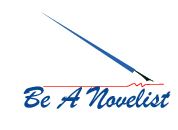 Patterns in Plotting
Patterns in Plotting
In this series about patterns in plotting we’ve established that, contrary to other areas such as science and the humanities, novelists must create patterns. (As opposed to other areas that tend to discover patterns.) This need to create brings about both a freedom and a responsibility for the novelist. (See the two previous posts in this series: Part I here, and Part II here.)
We further established that even though creativity is fluid and without form (like water), it requires a container or vessel through which it can be effectively channeled. (As opposed to letting it spill out all over without goal or purpose.) That vessel can come under the label of the patterns of novel plotting.
Three Types of Novelists
Basically, I’ve found in all my years of teaching, instructing, and editing, that novelists generally fall into one of three categories.
- Those who won’t begin a work unless they know every detail of how the novel is going to play out.
- Those who haven’t a clue where the story is going, what the characters are going to do, or when or why they should do it. (They prefer to trust the creative flow.)
- Those who have found a workable balance between the two.
Let’s take a closer look at each of the three.
First Type
In the first category we find the person who labors for hours over the plot outline. They become so deeply involved in the details of plots and subplots that they do everything except write the novel.
At first glance this appears to be an ideal situation. After all, with such a tight plot outline, writing the story should be a piece of cake. But here’s the rub.
Too much planning and outlining can result in actually stifling the creative flow. Keep in mind that the outline should never be a ball-and-chain that keeps you a prisoner of the outline. The outline is merely a preconception.
As the threads of your novel begin to weave together, new thoughts, ideas, and hunches will suddenly occur to you. It will be crucial that you remain free to follow these. Likewise, as your characters develop and come to life, they too will need freedom to do what they want to do.
The beginning novelist who falls into this category may be operating out of fear. It’s much safer to keep on outlining than to take that giant step and break free and begin the actual writing of the novel.
Second Type
Now let’s look at the opposite end of that spectrum. I briefly referred to this particular situation in Part II of Creating Patterns as a Novelist, and that is the beginning novelist who mistakenly believes that creativity should always be in free-flow mode. This individual has the notion that to outline would be to betray the creative flow.
As I mentioned previously, this novelist struggles to build up any momentum because he’s spending all his energy in an attempt to figure out what the story is about and the direction in which it’s going. Without the pattern of a good strategy, the creativity meanders around here and there, and accomplishes little.
The novelist described in the first category, as I mentioned, may be struggling with fear, whereas the novelist described as #2 is usually just misinformed. If this novice is open to instruction, further guidance and instruction will put him back on the right track.
The novelist who can buckle down, get to work, work effectively and efficiently, and who can produce novel after novel after novel, is the one who has found a comfortable balance between the two.
This is the novelist who has a clear perspective on the need for a pattern of strategy, the same way in which a General formulates a strategy for a battle plan. That General is aware that a wide variety of extenuating circumstances could alter the plan, but the basic strategy remains the same.
Understand that for a novel to progress at a good clip, it must have a structure in which to be contained. As described above, a structure that is too unyielding can restrict creative development. A structure that is shapeless, or worse yet, nonexistent, will weaken momentum.
The most desirable state for a novelist is to have a structure/pattern that is flexible enough to bend with possible changes in the story line or character development, but not so flexible that the story line keeps veering off onto little rabbit trails that lead nowhere.
Recognizing and understanding this need for patterns in strategy and plotting is yet another way to hone your writing skills and move you toward becoming the prolific author that you’ve always dreamed of becoming. Remember, don’t violate the patterns that you have set in place.
Photo Credits
© Daniel Gilbey | Dreamstime Stock Photos
© Johanna Goodyear | Dreamstime Stock Photos

Coming Soon
The first two titles in the Norma Jean Lutz Classic Collection will be available in print form.
Flower in the Hills and Tiger Beetle at Kendallwood will soon be in bound copies.
Watch for upcoming announcements.


![]()


